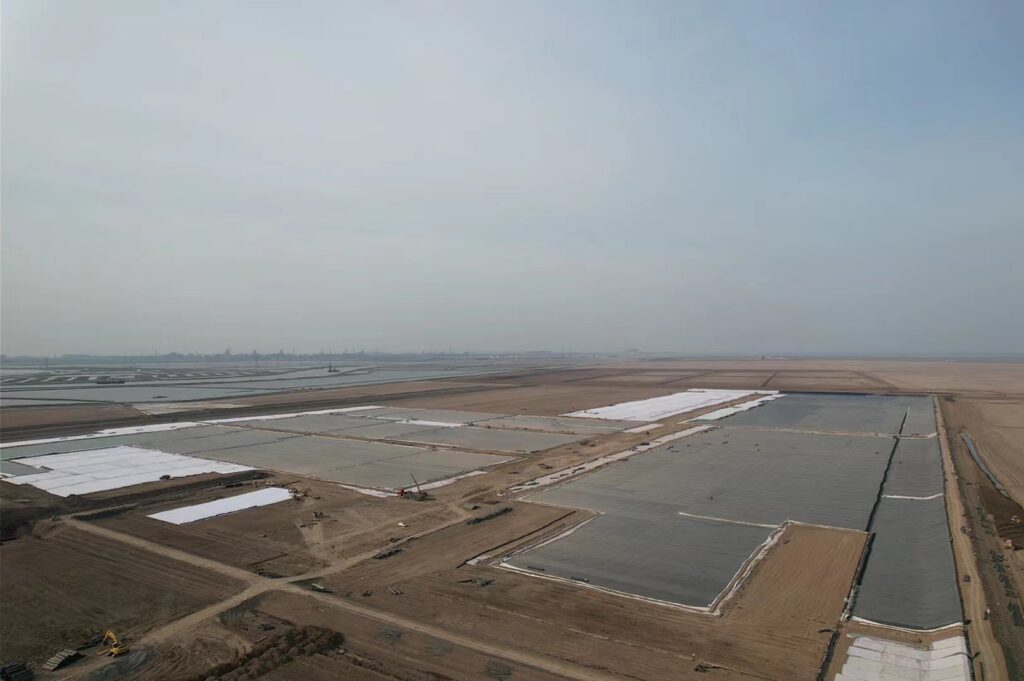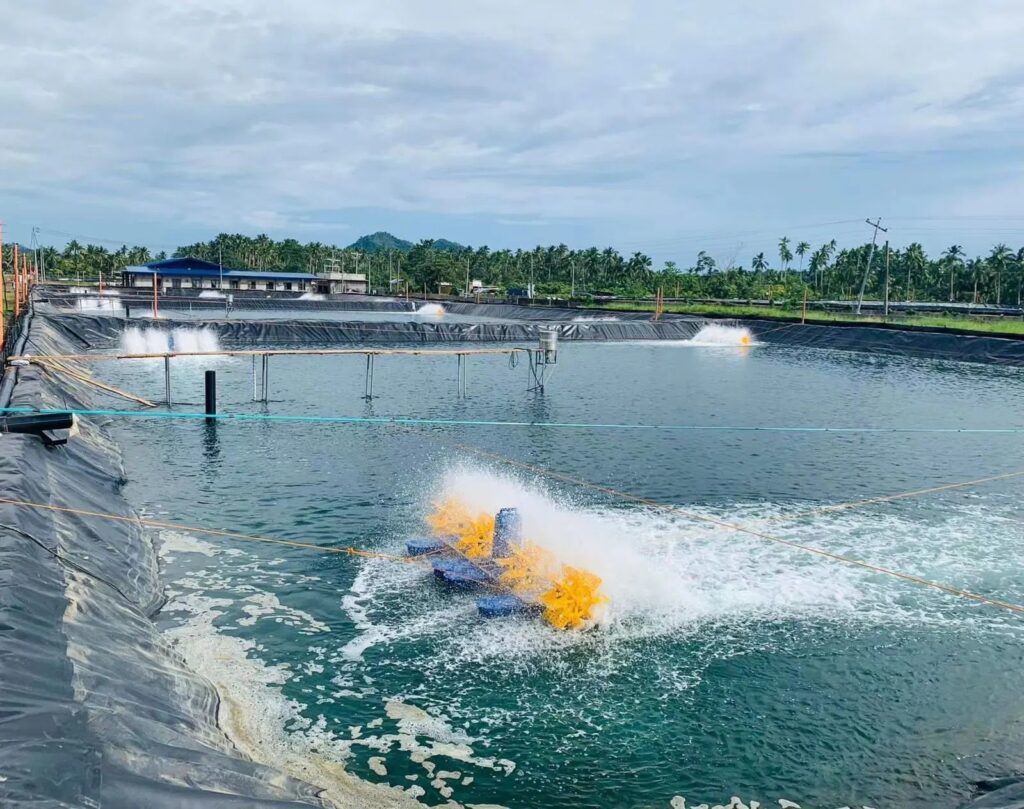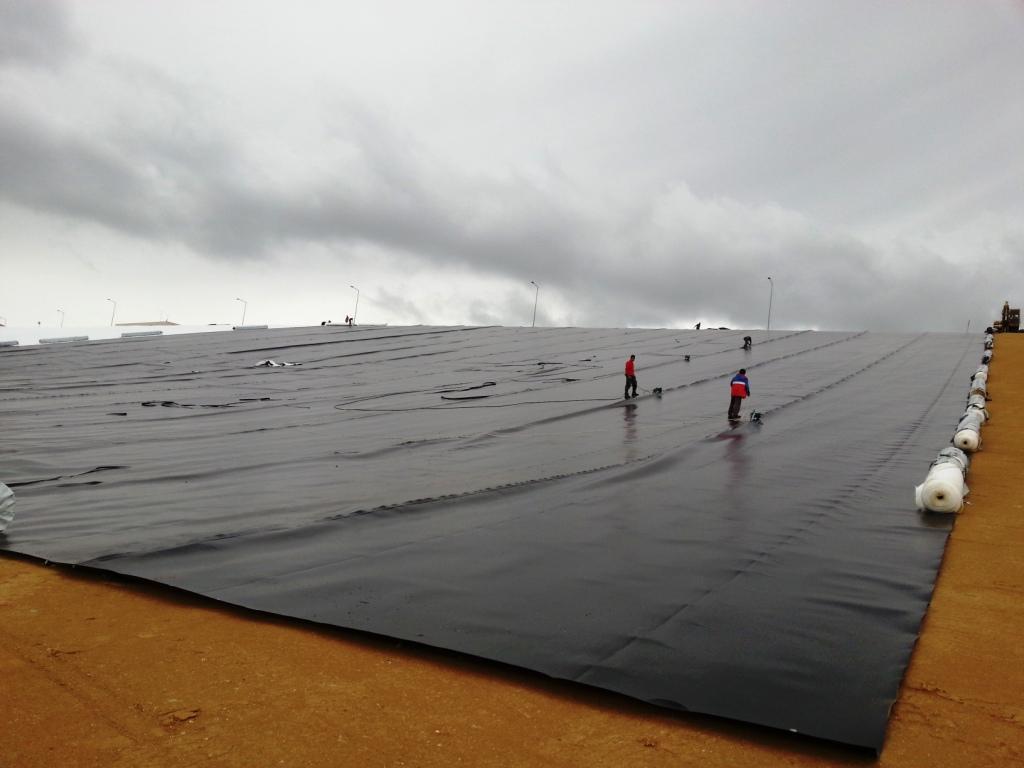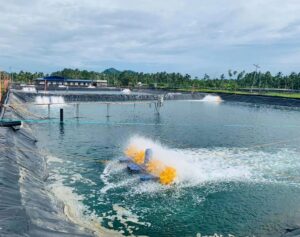what is hdpe dam liner?
HDPE dam liner refers to a dam liner made from High-Density Polyethylene (HDPE), which is a type of plastic polymer known for its strength, flexibility, and resistance to chemicals and environmental degradation. HDPE is a popular material choice for dam liners due to its excellent properties and suitability for containment applications.
Here are some key features and characteristics of HDPE dam liners:
Impermeability: HDPE is inherently impermeable, meaning it effectively prevents the passage of water through its structure. This property makes HDPE liners ideal for containing water in dams and reservoirs, minimizing seepage and water loss.
Chemical Resistance: HDPE is highly resistant to chemicals, making it suitable for use in environments where exposure to various substances is expected, such as agricultural ponds, industrial wastewater containment, and mining operations.
UV Resistance: HDPE is resistant to ultraviolet (UV) radiation from sunlight, which helps maintain the integrity and performance of the liner over time, even when exposed to outdoor conditions.
Flexibility: HDPE is a flexible material that can conform to the shape of the dam surface and foundation, allowing for easy installation and minimizing the risk of tears or punctures during construction.
Tensile Strength: HDPE has excellent tensile strength, allowing it to withstand stresses and strains induced by factors such as water pressure, settlement, and temperature fluctuations.
Longevity: HDPE dam liners have a long service life when properly installed and maintained, providing durable containment solutions for water storage and management projects.
Seam Welding: HDPE liners are often installed using heat fusion welding techniques to create strong and durable seams between individual sheets or panels of HDPE material.
Overall, HDPE dam liners offer a reliable and cost-effective solution for creating impermeable barriers in dam construction projects, providing efficient water containment and environmental protection.

what is dam liner?
A dam liner is a specially designed impermeable membrane or barrier used in the construction of dams and reservoirs to prevent water from leaking through the structure. The primary purpose of a dam liner is to maintain the integrity of the dam by reducing seepage and preventing water loss.
Dam liners are typically made from materials such as geomembranes, clay, concrete, or asphaltic compounds, depending on the specific requirements of the dam construction project. These liners are installed along the walls and base of the dam to create a watertight barrier that helps to contain the reservoir water.
The choice of dam liner material depends on factors such as the type of soil, the water flow characteristics, environmental considerations, and cost-effectiveness. The installation of a proper dam liner is crucial for the long-term stability and performance of the dam structure.

What are the specifications of dam liner?
The specifications of a dam liner can vary depending on several factors including the type of dam, the intended use of the reservoir, environmental conditions, and regulatory requirements. However, here are some common specifications and considerations for dam liners:
Material Type: Dam liners can be made from various materials including geomembranes (HDPE, LDPE, LLDPE, PVC, etc.), clay, concrete, or asphaltic compounds.
Thickness: The thickness of the dam liner material is an important specification and depends on factors such as the anticipated water pressure, soil conditions, and expected lifespan of the dam. Thickness can range from a few millimeters to several millimeters or more.
Tensile Strength: The tensile strength of the dam liner material is crucial for withstanding stress and strains induced by factors such as water pressure, temperature changes, and settlement of the foundation.
Permeability: The permeability of the dam liner material determines its ability to prevent water from passing through the barrier. Low permeability is desirable for effective water containment.
UV Resistance: For dam liners exposed to sunlight, UV resistance is important to prevent degradation and maintain the integrity of the liner over time.
Seam Strength and Integrity: For liners made of flexible materials like geomembranes, the strength and integrity of seams and welds are critical to ensure the overall effectiveness of the liner system.
Chemical Resistance: Depending on the quality of the water in the reservoir and potential exposure to chemicals or pollutants, the dam liner material should be resistant to degradation caused by these substances.
Flexibility and Conformity: The dam liner material should be flexible enough to conform to the irregularities of the dam surface and foundation without compromising its integrity.
Installation Method: Specifications may also include details about the installation method, including surface preparation, anchoring systems, and quality control measures during installation.
Regulatory Compliance: Dam liners must meet regulatory standards and guidelines set by relevant authorities governing dam construction and environmental protection.
These specifications may vary based on the specific requirements of the dam project and should be determined through engineering analysis and consultation with experts in dam construction and geotechnical engineering.
Recent Posts
Author
-

Founded in 2002, Tinhy's team focuses on the manufacturing, marketing, installation, application and research and development of geosynthetic materials.
View all posts




